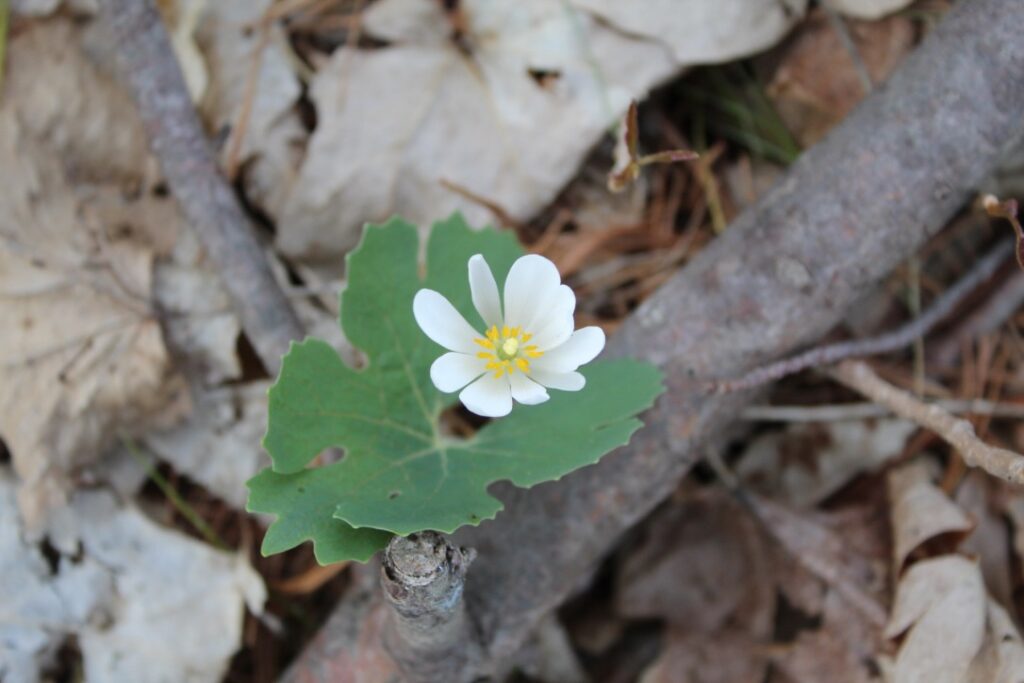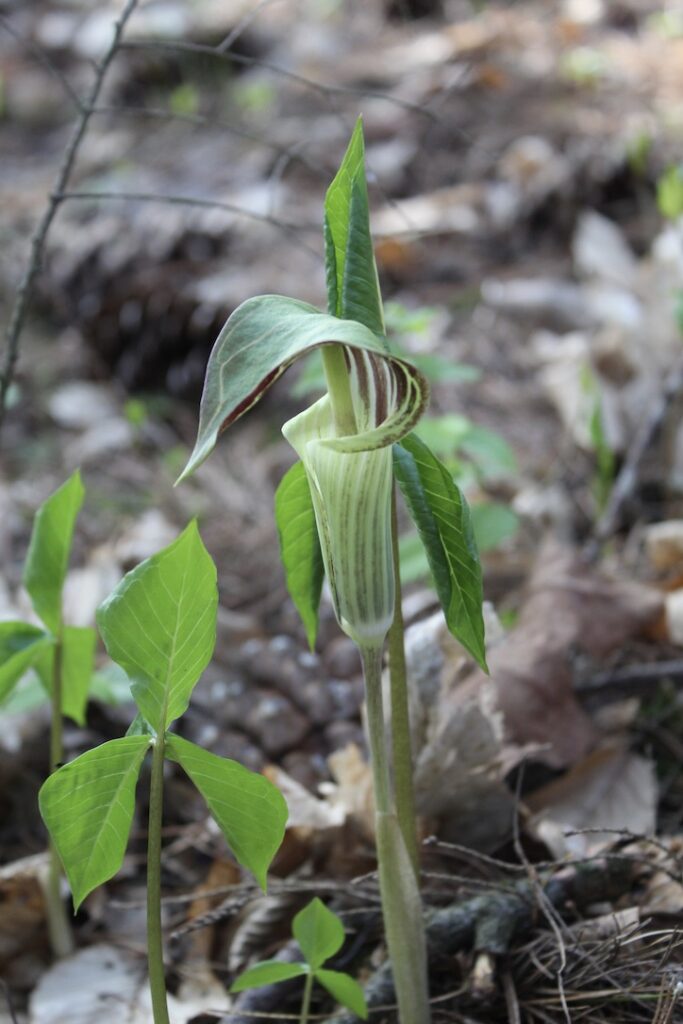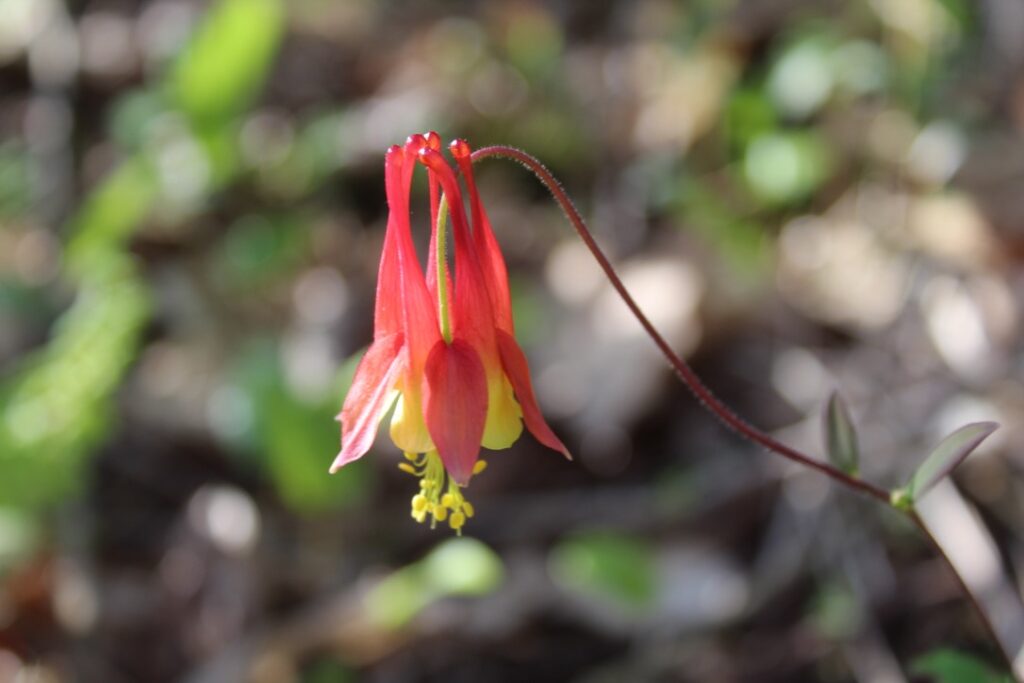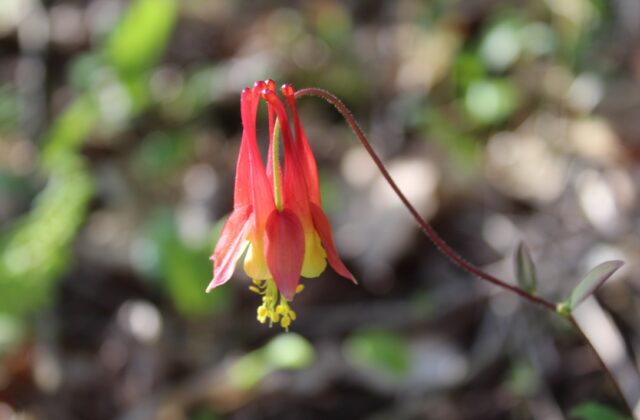Discovering the Short-Lived Beauty of Wildflowers
by Mattie Vandiver
As spring enters her prime, the ephemerals begin to bloom in Barbour Woods, Great Mountain Forest and many other places around Norfolk and throughout New England. Spring ephemerals are wild flowers that grow, as the name implies, for a short period of time, mostly during the month of May in Connecticut. In Norfolk, there are five common spring ephemerals that can be enjoyed during the month ahead.

Bloodroot (Sanguinaria canadensis) is a perennial native to eastern North America. It is easily identified by its unique leaves that are reniform in shape and branch out in a series of lobes, the center one being three-pronged. Its flowers are beautifully simple, with small white petals circling a yellow center. The plant is named bloodroot because, when picked, the stem and root bleed an orange tint. Native Americans often used the roots to make a dye for their clothing and leather. Bloodroot has been used as a homeopathic remedy to treat various illnesses and ailments, though there have been adverse effects with these treatments. It is also toxic in large quantities.
Yellow trout lily, or yellow dogtooth violet (Erythronium americanum), is a perennial native to North America. The oval leaves are identifiable by the splotched coloring of greens and purples. The flowers are bright yellow and rise from the leaf cluster on a long stem. Its flowers often face downward to prevent certain insects from stealing the flower’s nectar, while allowing others to pollinate it. The name trout lily comes from the similarity of the leaf patterning to that of a brook trout. Trout lilies can store a large amount of phosphorus in their leaves and return that deposit to the soil once they die, for other plants to use. Medicinally, trout lilies have been used to create poultices that, when applied to the skin, help reduce inflammation and swelling.

Jack-in-the-pulpit (Arisaema triphyllum) is a perennial native to eastern North America. Its leaves are divided into three leaflets, and each plant usually has one to two leaves. The flowers are unique in that they are green and cylindrical and covered with a hood. The center piece, called the spadix, sticks up within the outer part, called the spathe, which creates the image of a person in a pulpit. In late summer, the plant forms a cluster of red berries. Jack-in-the-pulpit contains calcium oxalate crystals, which, if eaten raw, are like little needles sticking in your mouth. The underground tubers can be eaten if thoroughly dried or cooked to remove the calcium crystals.
Red trillium (Trillium erectum) is a perennial native to North America. Like Jack-in-the-pulpit, each leaf has three leaflets, and it can be difficult to distinguish between the two plants if they are not flowering. The trillium flower is deep burgundy in color and has three petals arranged symmetrically around a yellow and brown center. It has an unpleasant smell that attracts carrion flies, its pollinators. The root has been traditionally used to aid childbirth.

Wild red columbine (Aquilegia canadensis) is a perennial native to eastern North America. The flower of red columbine is intricate and hangs downward, with five outer petals that are salmon pink, forming around an inner ring of five pale yellow petals. The inner yellow pistils and stamens protrude from the center of the inner petals. The leaves have groups of three small leaflets, and each stem has multiple leaves. The most frequent pollinators of red columbine are hummingbirds. The seeds of wild red columbine have been used to treat a variety of ailments, though since the plant can be highly toxic, using it for medicinal purposes is best avoided.
These ephemerals can be identified in the Norfolk woods and hiking trails throughout the month of May. In addition, they may also be found in and around Bartholomew’s Cobble in Sheffield, Mass.

